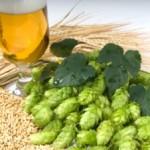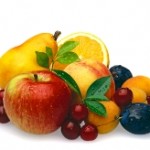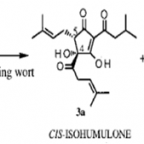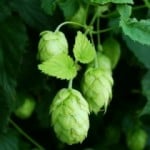Brewed for that long weekend, the camping trip, the holiday on the coast, or just a weekend at home.
The post Coaster Beer – Undeniably Good appeared first on Beer & Brewer.
Brewed for that long weekend, the camping trip, the holiday on the coast, or just a weekend at home.
The post Coaster Beer – Undeniably Good appeared first on Beer & Brewer.
Revamped Redback strikes the balance between a sparkling Summer Ale and a Belgian Wheat.
The post Matilda Bay reimagine Redback for Summer appeared first on Beer & Brewer.
Tis’ the season for some craft-beer delight and gathering ‘round a table full of holiday cheer as celebrations begin with family and friends from far and near. Ooof. OK. Let’s pause here for a minute on the Hallmark movies, whole nut displays no one ever eats, and fruit cake. Let’s talk beer. And let’s make […]
The post ‘Tis the Season to Be Beery appeared first on CraftBeer.com.
Brewery adds another Japanese beer to its stable after 2011 deal to make and sell Sapporo.
The post Coopers secures local rights to Yebisu Premium appeared first on Beer & Brewer.
 This week I take a look at how well hop oils survive the brewing process to make it into the finished beer. Some oils and hop varieties do much better depending upon when they are added when brewing. What is Aroma Oil Survivability? Aroma oil survivability is simply a measure of how well an aroma […]
This week I take a look at how well hop oils survive the brewing process to make it into the finished beer. Some oils and hop varieties do much better depending upon when they are added when brewing. What is Aroma Oil Survivability? Aroma oil survivability is simply a measure of how well an aroma […] Headed south to the Gulf Coast? Interstate 65 offers up several great craft beer cities to quench your thirst as you stop for the night.
The post The I-65 Craft Beer Route appeared first on CraftBeer.com.
(SAN DIEGO, CA) – Ballast Point announced this week the release of its refreshing seasonal specialty beer, simply: Blood Orange Lager. Made in the Pilsner style, Blood Orange Lager is light and crisp with a prominent aroma of blood orange and citrus. This pils is lightly hopped with Motueka hops from New Zealand which balance […]
The post Ballast Point Introduces New Seasonal Blood Orange Lager appeared first on The Full Pint - Craft Beer News.
 This week I cover some of the basic concepts of using fruit in BeerSmith for making beer, wine, cider or meads. Fruit Basics BeerSmith 3 supports the use of fruit juice, purees, honey and whole fruits natively when making beer, mead, wine and cider recipes. Typically most fruits are added during primary or secondary fermentation. […]
This week I cover some of the basic concepts of using fruit in BeerSmith for making beer, wine, cider or meads. Fruit Basics BeerSmith 3 supports the use of fruit juice, purees, honey and whole fruits natively when making beer, mead, wine and cider recipes. Typically most fruits are added during primary or secondary fermentation. […] From a stout to a Saison with a twist, these are our top Spring beers.
The post Spring’s 16 outstanding Australian craft beers appeared first on Beer & Brewer.
 Stan Hieronymus joins me this week to discuss hop survivables, biotransformations, and understanding which hop oils survive the brewing process. Subscribe on iTunes to Audio version or Video version or Spotify or Google Play Download the MP3 File– Right Click and Save As to download this mp3 file. Your browser does not support the audio […]
Stan Hieronymus joins me this week to discuss hop survivables, biotransformations, and understanding which hop oils survive the brewing process. Subscribe on iTunes to Audio version or Video version or Spotify or Google Play Download the MP3 File– Right Click and Save As to download this mp3 file. Your browser does not support the audio […]  This week I take look at hop isomerization in beer brewing and how it applies to brewers. Isomerized alpha acids in beer are the primary bittering compound used to offset the sweetness of the malt in beer. What is Isomerization? Isomerization is a process where a molecule is transformed into another molecule that contains the […]
This week I take look at hop isomerization in beer brewing and how it applies to brewers. Isomerized alpha acids in beer are the primary bittering compound used to offset the sweetness of the malt in beer. What is Isomerization? Isomerization is a process where a molecule is transformed into another molecule that contains the […]  Jamil Zainasheff, founder of Heretic Brewing joins me this week for a beer brewing question and answer session. I apologize for the audio quality – we had some echo coming through from Jamil’s audio feed. Subscribe on iTunes to Audio version or Video version or Spotify or Google Play Download the MP3 File– Right Click […]
Jamil Zainasheff, founder of Heretic Brewing joins me this week for a beer brewing question and answer session. I apologize for the audio quality – we had some echo coming through from Jamil’s audio feed. Subscribe on iTunes to Audio version or Video version or Spotify or Google Play Download the MP3 File– Right Click […] Hops get all the attention—all the fame, puns and glory while yeast does almost all the work. Hops dominate label space, and varieties like Cascade, Strata and Citra are practically house-hold names, thanks to the seemingly unquenchable demand for every category of IPA. Yet basic beer ale yeast Saccharomyces cerevisiae is abstract to most people, […]
The post Yeast, A Romance Story appeared first on CraftBeer.com.
 This week I take a look at how you can use a blend of hop varieties rather than a single variety to maximize your hop flavor and aroma. Why Blend Your Hops While brewers often use different hop varieties for boil hopping, whirlpool hopping and dry hopping, I was not that familiar with the technique […]
This week I take a look at how you can use a blend of hop varieties rather than a single variety to maximize your hop flavor and aroma. Why Blend Your Hops While brewers often use different hop varieties for boil hopping, whirlpool hopping and dry hopping, I was not that familiar with the technique […] Dawn Patrol came out on top in the WA brewery’s You Vote We Brew competition.
The post Wake up and smell Gage Roads’ Breakfast Stout appeared first on Beer & Brewer.
New instalment of the award-winning annual release is limited to just 3,000 cans.
The post Felons’ Imperial Stout arrives right on time appeared first on Beer & Brewer.
American craft beers find their way into Japanese and Korean restaurants.
The post Spice, Fat, Acid, Beer appeared first on CraftBeer.com.
Yakima Chief’s all-new Cryo Pop blend to be available through Cryer Malt by July.
The post ‘Revolutionary’ hop product coming Down Under appeared first on Beer & Brewer.
Brick Lane will also donate $10,500 to the organisation’s scholarship program.
The post Brick Lane, Pink Boots combine on new beer appeared first on Beer & Brewer.
It’s one of the easiest drinking IPAs we’ve come across with a lager-like crispness.
The post Burleigh release Hop Nectar Juicy IPA appeared first on Beer & Brewer.
 This week I take a look at one of Germany’s most popular beer styles, the light lager known as German Helles. Helles is a traditional German Lager produced primarily in Southern Germany (Bavaria) around Munich. The word “hell” in German can be roughly translated as “pale, light or bright” in English. The History of Helles […]
This week I take a look at one of Germany’s most popular beer styles, the light lager known as German Helles. Helles is a traditional German Lager produced primarily in Southern Germany (Bavaria) around Munich. The word “hell” in German can be roughly translated as “pale, light or bright” in English. The History of Helles […] Many in the world of craft beer seek out the artisans of coffee who show the same amount of love to coffee that craft brewers pay to craft beer. As these brewers develop a love and appreciation for craft roasters, some brewers have found ways to utilize a roaster’s skill and attention to detail to elevate the brewery and its offerings.
The post The More Fulfilling Cup: Craft Brewers and Craft Roasters Find Common Threads Together appeared first on CraftBeer.com.
Frenchies Bistro & Brewery release three new IPAs plus we revisit some old favourites.
The post French flair for the classics and the contemporary appeared first on Beer & Brewer.
Sydney brewery’s expansion includes new tanks, canning line and dedicated barrel room.
The post Wayward to increase capacity by 25 per cent appeared first on Beer & Brewer.
New Zealand-Style Pale Ale and India Pale Ale added to BA’s style guidelines.
The post New Zealand Pale Ales added to style guide appeared first on Beer & Brewer.